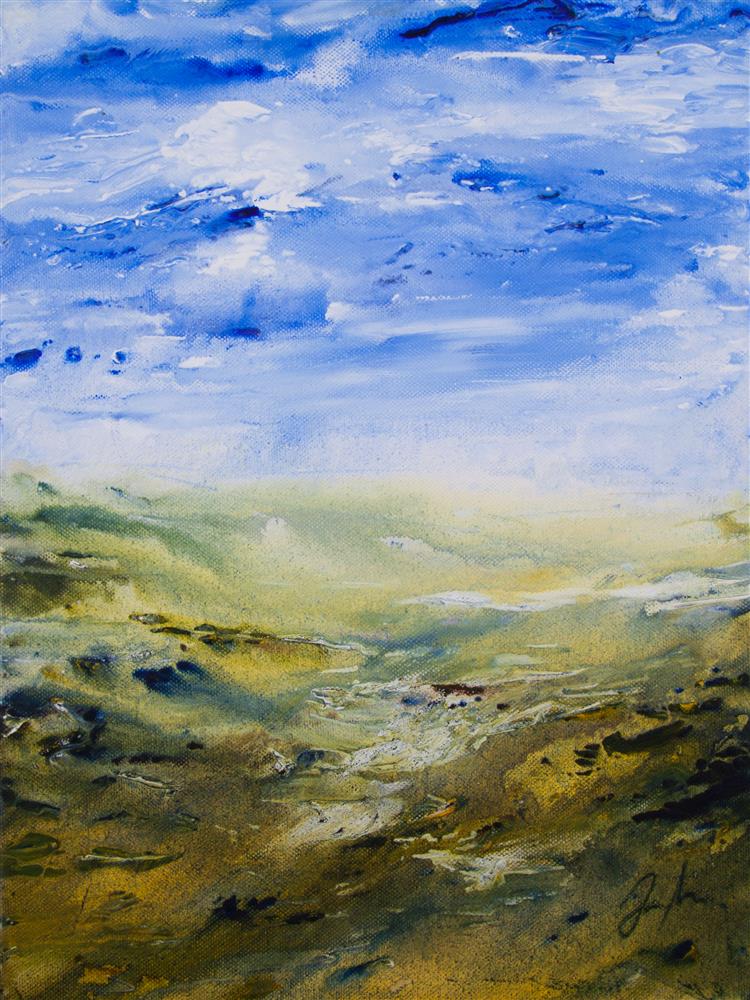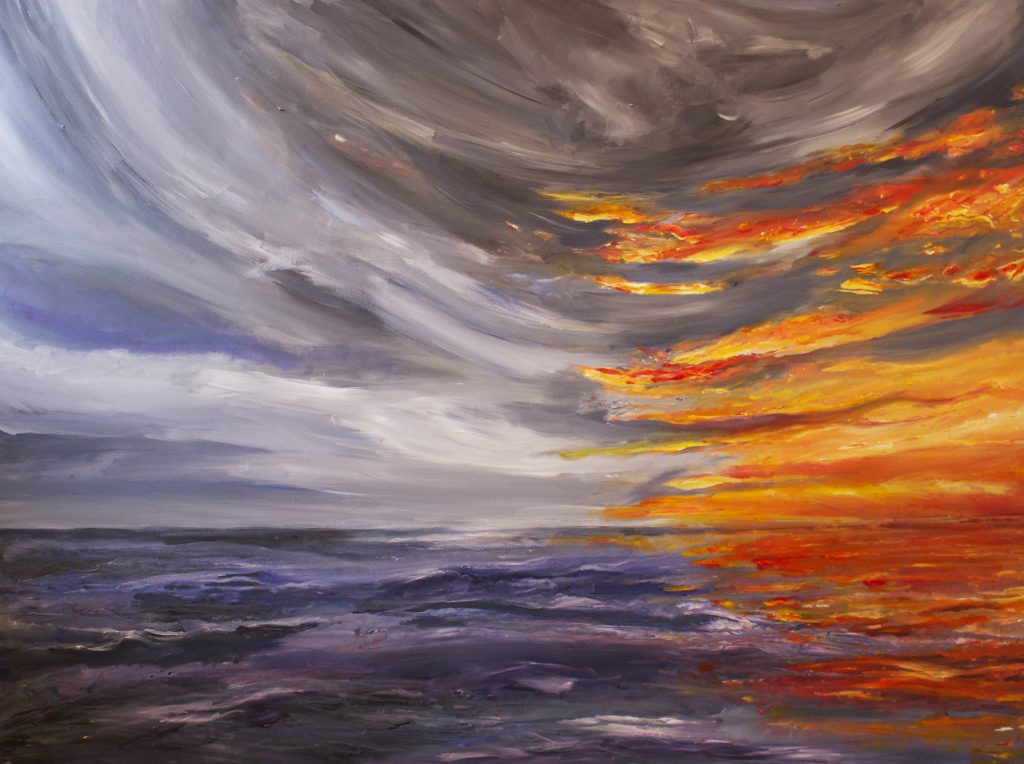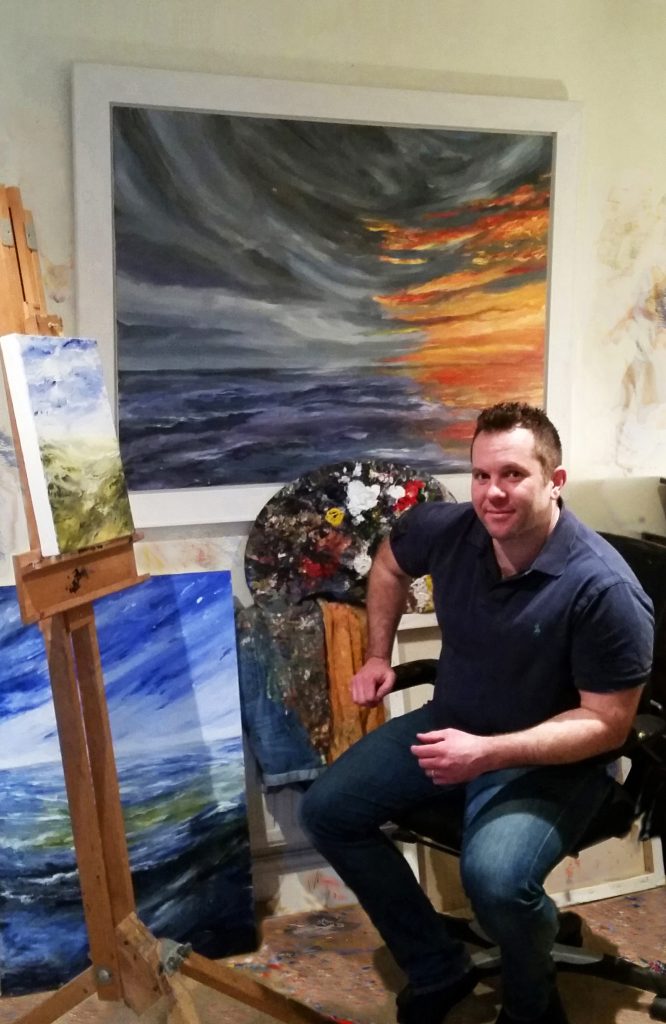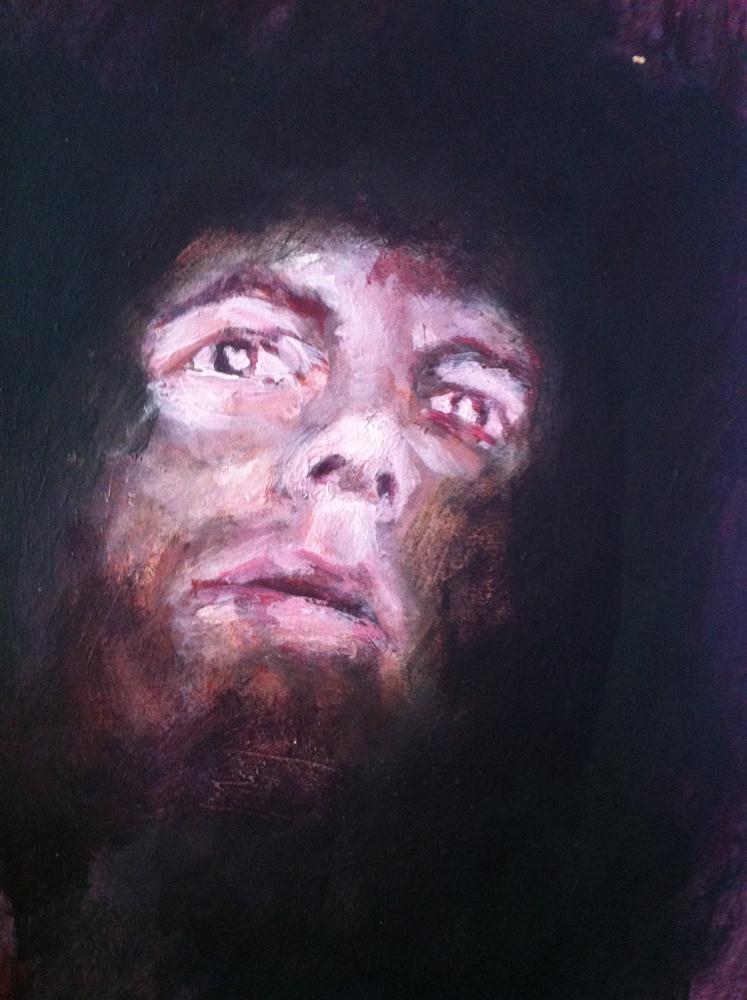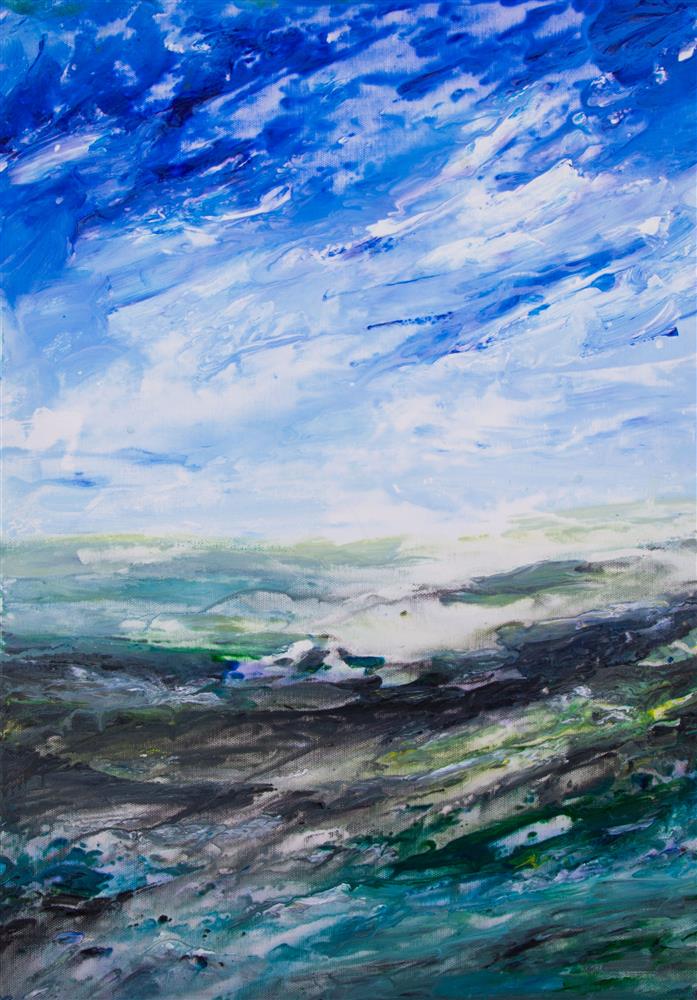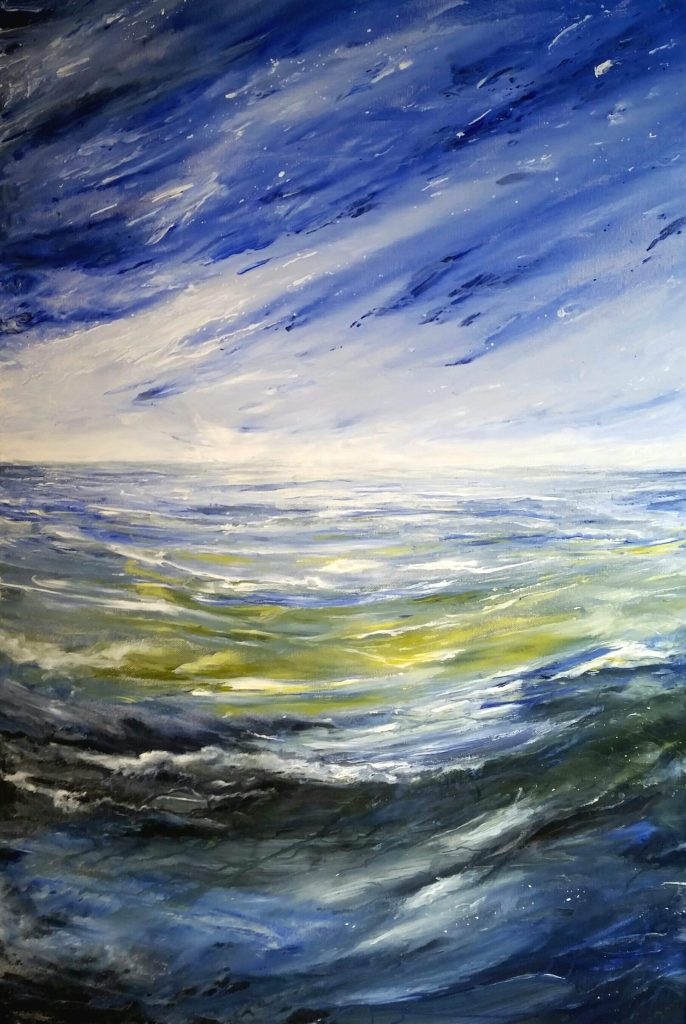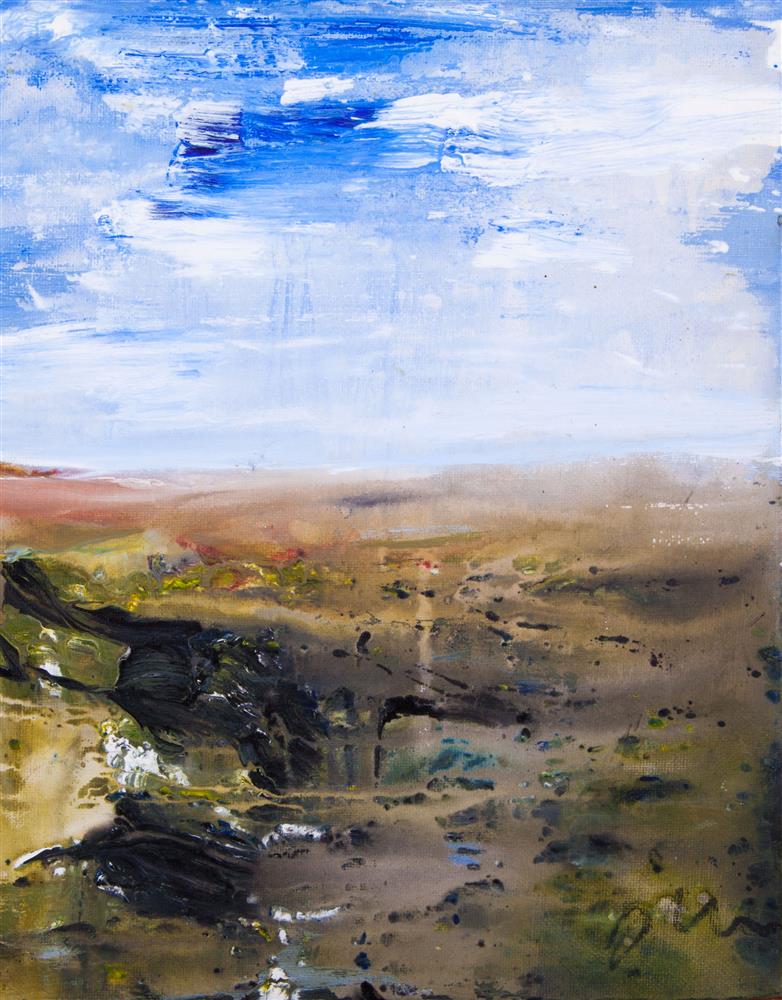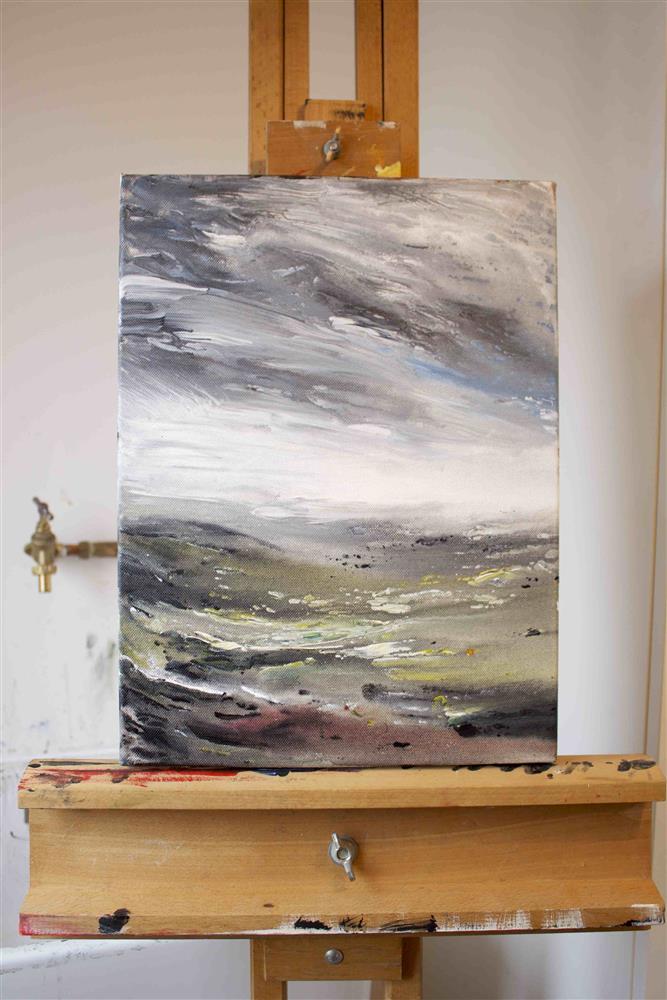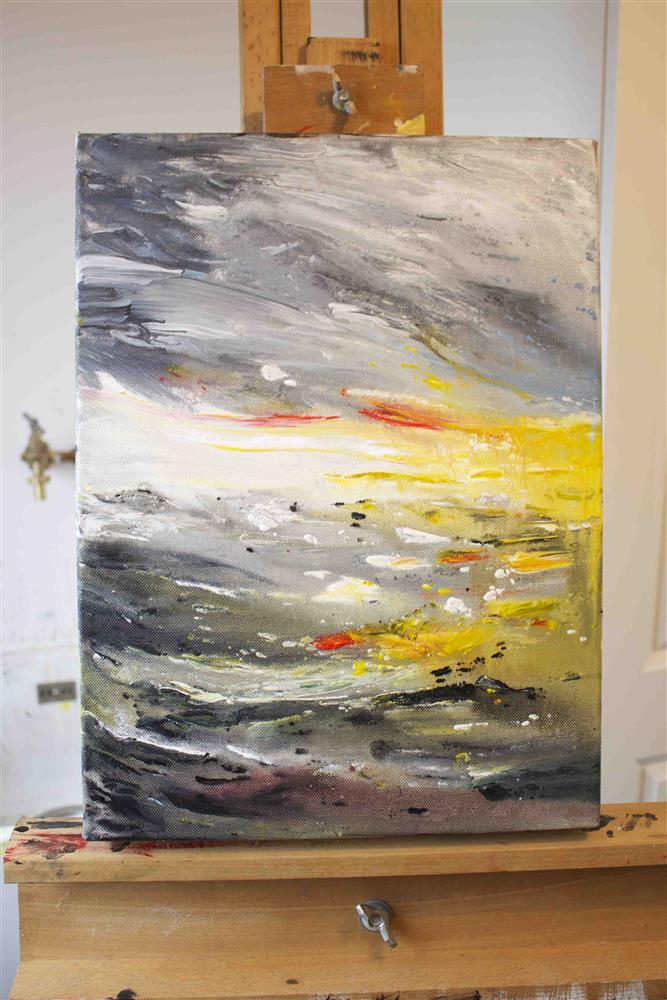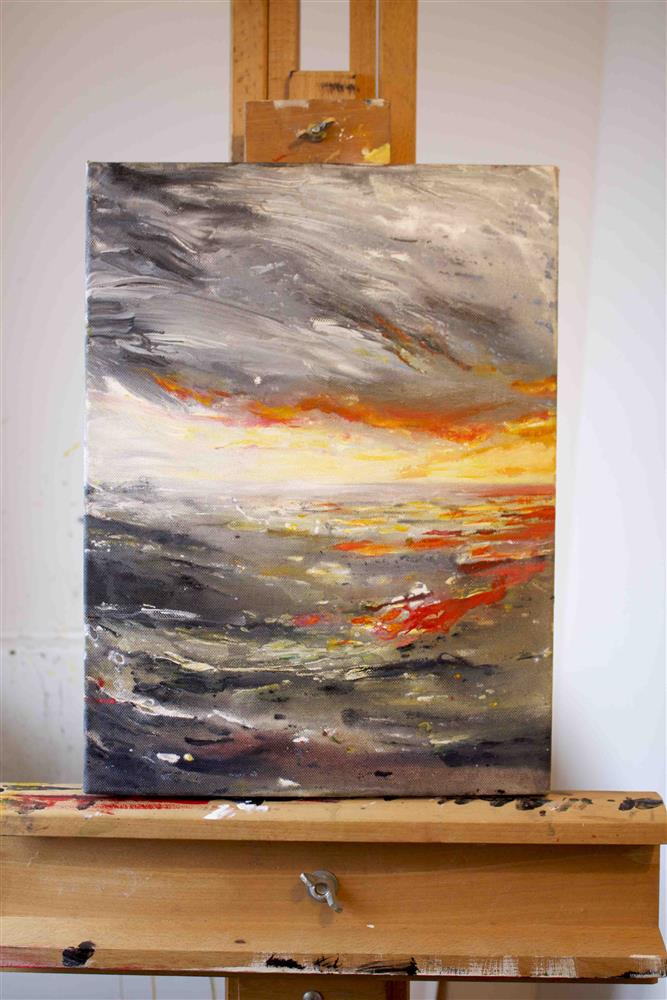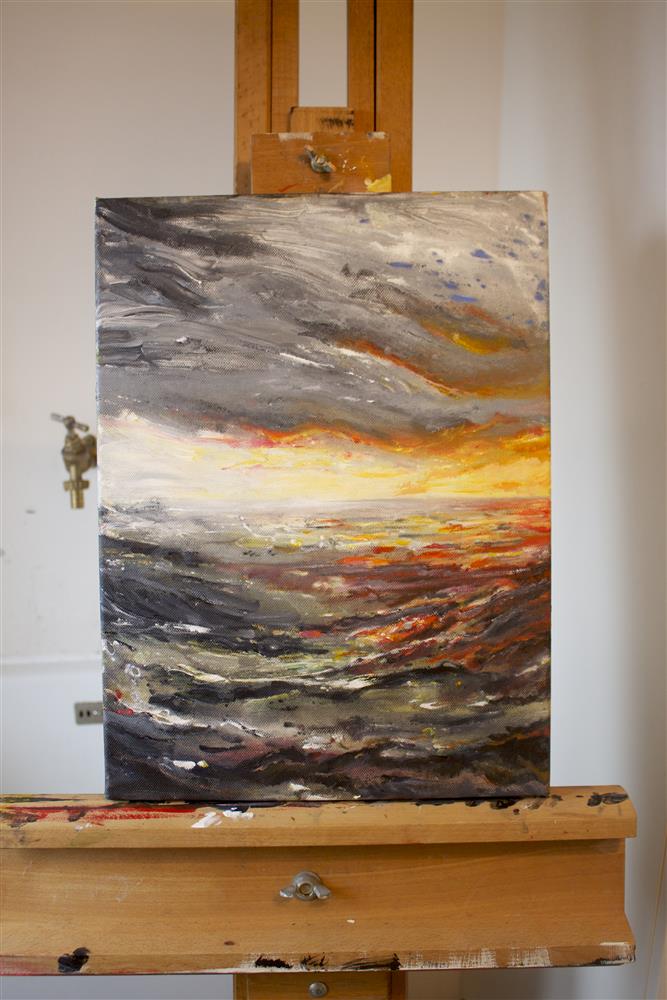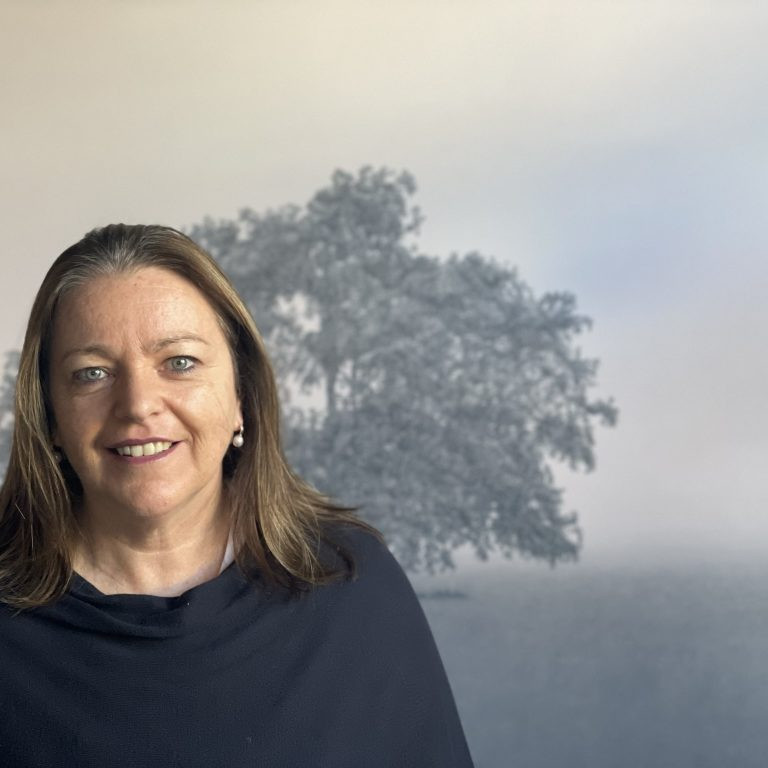James Mackenzie Painter - Chelmsford, Essex, England
On completing your degree, you taught, when did you decide to take on painting full time?
While teaching Art and Design in secondary education for 8 years, I continued to paint in my free time and to develop my style.
Since 2011 I have been sharing my work on social media and, as a result, began attracting interest from galleries in London and elsewhere, as well as receiving a lot of positive feedback from art lovers generally, and more commissions were forthcoming.
Desolate Blue 2, Acrylic on canvas, 16″ x 12″
At this point I decided to leave education and focus on my own art career full time.
Was it a natural progress?
Yes, I feel the transition from art teacher to full time artist can be a natural step, in particular if you have a background is fine art.
My GCSE and A-Level students were very keen to hear about the projects on which I was working and the pieces which were being exhibited.
A particularly proud moment for me was when one of my A-Level students asked if she could use me as a reference for one of her artist profile studies. I was able to show her my process and work with her to help her to develop work in a similar style.
When did the demands of teaching and painting become unbalanced?
The demands of day to day teaching are high and combined with marking and planning can leave little free time to paint. The increasing interest in my work brought me to the point where I felt I needed to make the ’now or never’ decision.
The Lay of the Land, Acrylic on canvas, 48″ x 35.5″
What would you recommend to others in this balancing act?
I think that most artists find producing their own artwork to be a relaxing experience and a chance to take one away from day to day stress. Fitting in an hour or so a day working on a private commission or towards an exhibition is therefore generally manageable, and also a welcome distraction, certainly in the early stage of a career.
I definitely feel that if, as an artist, you can get to the point where you are able to devote yourself full time to your work, you should give it a go.
Your studio is in Essex give us some insight into the hours your work demands?
I work daily in my studio and I take a break, only when I am completely satisfied with a specific section. I work in acrylic which is a quick drying medium and I am continually letting the paint find its path… scraping paint off certain areas, adding texture… letting water flow over other parts and as you can imagine this process can get very messy!
I have a quite literally ‘hands on’ approach, often discarding the paintbrush completely. I use my forearms on my larger works so I am very often actually up to my elbows in paint.
Discuss the importance of having your own studio space?
I find it absolutely vital to have my own studio space as, when I am painting, I need to have as little distraction as possible.
My paintings seem to form almost organically…I let the paint flow and find the painting through this process and often more paint is being removed from a section than stays on the canvas.
A distraction at a point where I have almost created a section with which I am happy could mean the moment is lost as the paint dries so quickly. This is perfect for my style but means I have to act quickly and make the changes needed at each visit to the canvas.
As well as sky sea and land you paint portraits discuss this in context to ‘A Light Dawns”
Yes, I very much enjoy creating what I describe as my ‘expressive portraits’, some of which depict the extremes of human emotion.
A Light Dawns, Acrylic on canvas, 30″ x 21″
I feel that moving between styles and techniques keeps my work fresh and I can range from portraits to landscapes and then to abstract, all with the same pallet in one sitting.
I love to work on multiple canvasses at the same time… a colour tone used for one of my abstract works could be the perfect colour for one of my expressionist portraits or a shadow in a landscape.
For this painting ‘A Light Dawns’ I was keen to experiment with light and dark and with strong contrasts.
The scale of this piece, being life size, is very important as the viewer is face to face with, and able to look directly into, the eyes of the subject.
I am pleased with the composition of this piece and feel that the dark, negative space on the right of the picture, is an important component and adds to the atmosphere.
Many modern UK artists keep going to the sky and sea, is it the natural beauty about you or have you such deep understanding of them through Turner?
I tend to refer to my latest works as ‘Skyscapes’ and these are the paintings about which and in which I feel at my most passionate.
Desolate Blue 4, Acrylic on canvas, 32.5″ x 16.5″
In these paintings I always begin with the ‘expressive’ skies, and only when I am satisfied that I have captured the feeling that I am after, will I start to create either the landscape or sea beneath.
The sky then determines the tones of the work and I begin adding contours and colour and, as the piece develops naturally, at this stage it can become either a seascape or a landscape.
I have found that contours, which appear initially to be hills, may change slightly to become crashing waves… the land and the sea have so many similarities.
Desolate Blue 6, Acrylic on canvas, 36″ x 24″
I am of course a huge admirer of the work of Turner, who was essentially the first ‘expressionist’ painter and he is one of my greatest sources of inspiration.
Turner’s passion for the sky and sea was so great that he is said to have strapped himself to the mast of ships in order that he could literally ‘experience’ a storm at sea, and try to capture its power.
Many of his skies are notable for their luminosity and sense of movement and, although I haven’t gone to quite the lengths that Turner did, I feel very proud when people have said that in my work I have “set the sky on fire”.
St Oswalds Fire, Acrylic on canvas, 16″ x 12″
You completed your training in 2000 The Richard Rogers building was completed in the same year. Discuss the relationship of 2000, place and you the artist
Your current exhibition within this building, and how the atmosphere personally affects you and the work you have produced for this exhibition?
The building which will house my upcoming exhibition was indeed completed in the year in which I also finished my formal artistic training. When I visited Tate Britain in the summer of 2000 and studied Turner’s paintings, the new millennium seemed to be full of creative promise.
Fourteen years earlier Richard Rogers had completed the iconic and even better known building for the Lloyd’s of London insurance market and in the Lloyd’s Register building (the building which now houses Gallery@LR), his highly distinctive use of the glass atrium is again evident.
These atria allow light to penetrate right to the interior of the buildings and in the case of Gallery@LR, helps make it a wonderful space in which to exhibit. To be able to display my paintings, particularly my sea and skyscapes, in such a wonderful building, which is so associated with the sea and maritime trade, is a huge privilege and will I am sure provide the best possible setting.
Since first visiting Gallery@LR I have been inspired by its potential and I have enormously enjoyed producing artwork for such an impressive space.
In this exhibition, I have tried to create a journey through my different styles and build a narrative to help the viewer to understand my work, and I believe that this wonderful space and the extraordinary light will play a very important role in this.
Desolate Blue 1, Acrylic on canvas, 12″ x 9.5″
Can you take us through the five stages of St Oswald and how you work technically?
I am so glad that you wanted to talk about the stages of the creation of St Oswald’s Fire.
I really enjoyed uploading the stage by stage progression of my work to my Twitter followers. It is wonderful to have instant feedback on the work and to be able to interact with people who feel as passionate about art as I do, and to see their ‘real-time’ comments can be inspirational.
This painting is one piece that, from its inception, I intended to create as a seascape…rather than it ‘organically’ becoming a landscape or a seascape depending on the flow of paint.
In the first of the stages of creation, which, for this painting, I shared with my Twitter followers, I aim to create a feeling of movement in the sky, and also in this particular painting, the sea.
St Oswalds Fire, Acrylic on canvas, 16″ x 12″
Stage 1
St Oswalds Fire, Acrylic on canvas, 16″ x 12″
Stage 3
The next stage involved the adding of the basic sunset tones to quite a wide area of the canvas and in the third stage I shared pictures of the adding of the deeper tones and also some refinements to the painting.
By stage 4 I am trying to create a sense of depth and a clearer horizon line where detail is diminished and colour fades.
St Oswalds Fire, Acrylic on canvas, 16″ x 12″
Stage 4
In the final stage, the tone and contrast are enhanced and the final finishing touches and made to the fine details.
St Oswalds Fire, Acrylic on canvas, 16″ x 12″
Stage 5
You said’ “My new ‘natural’ and quiet spontaneous painting style allows my subconscious to take hold and I am able to create land / seascapes which previously existed only as memory.” Expand on this statement.
Yes, I am very passionate about the style in which I am currently working.
As I mentioned earlier in the interview, I always begin with the sky in these new works. I find that the sky dictates the atmosphere of the painting and the rest just seems to follow.
I have a good visual memory of landscapes, which I have seen or encountered and a good understanding of the technical challenges of landscape painting, and these attributes mean that I can create landscapes or seascapes organically, that is to say without too much preparatory thought, as the paint flows over the canvas.
I almost let the paint guide me, and then I change parts as the concept takes shape, often with more paint being removed from the canvas than staying on it.
If an area ‘works’ it stays… if not it is removed or altered. Each stage needs to be created reasonably quickly because as I have said, acrylic with water dries quickly and this fast drying process works perfectly in this style of painting.
I also mentioned earlier that I don’t want brush marks on my work so I have taken to using my hands and even forearms to blend and add colour tones.
Some of the images are clearly from memory or recollection of places seen or experienced, but many seem to form right in front of me.
Contact details.
http://www.mackenzieart.co.uk/
james@mackenzieart.co.uk
James Mackenzie, Chelmsford, Essex, England
Interview by Deborah Blakeley, March, 2016
Think a colleague or friend could benefit from this interview?
Knowledge is one of the biggest assets in any business. So why not forward this on to your friends and colleagues so they too can start taking advantage of the insightful information the artist has given?
Other artists you may be interested in:



